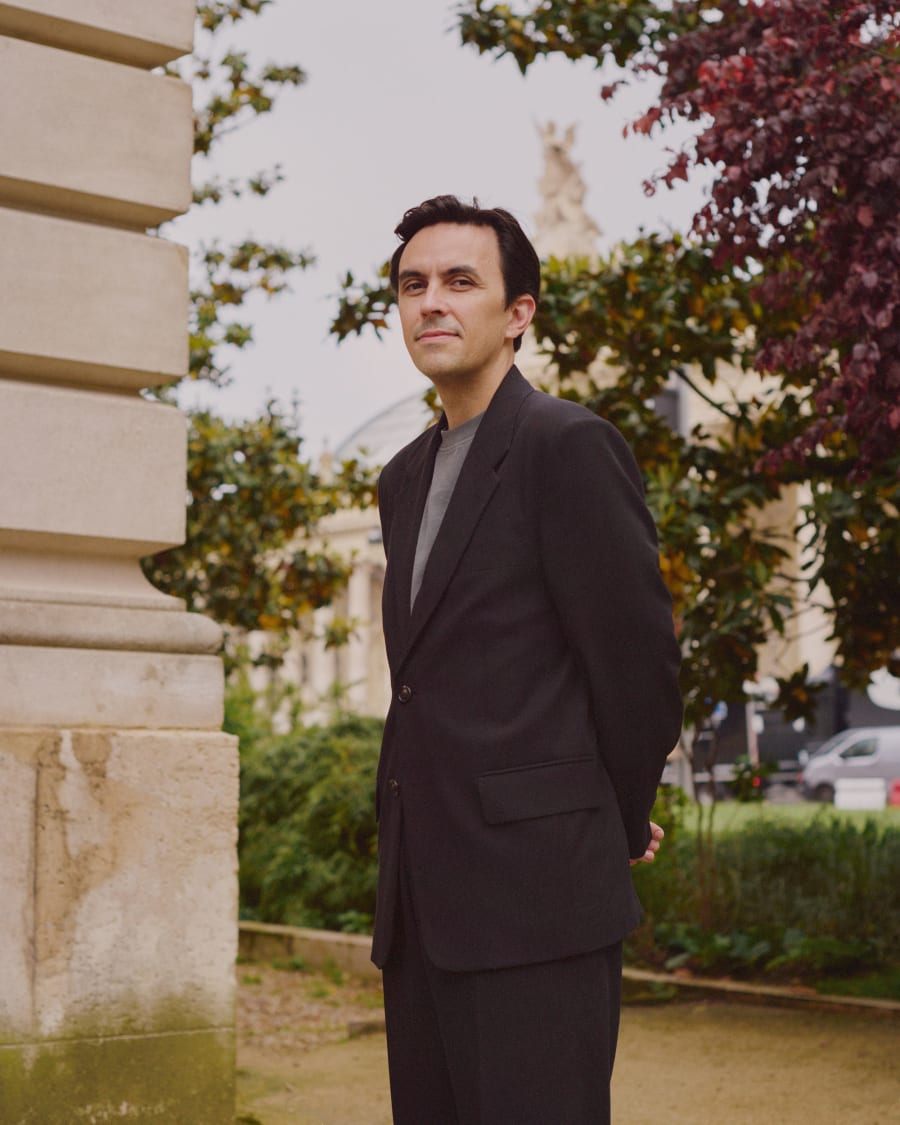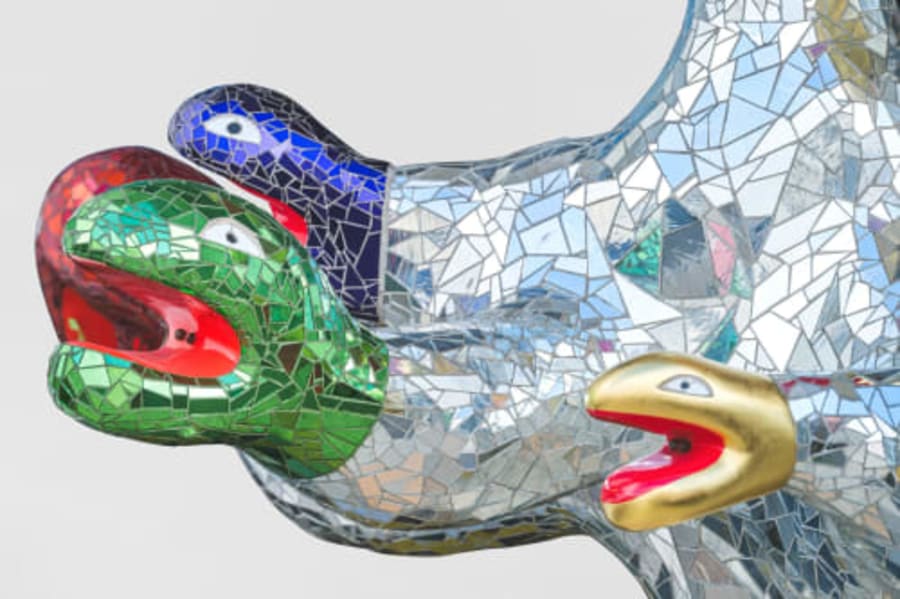Built for the 1900 Universal Exhibition, the Petit Palais, located opposite the Grand Palais, now houses the Musée des Beaux-Arts de la Ville de Paris, with a rich collection ranging from Antiquity to the 19th century. In 2024, for the first time, the Petit Palais is collaborating with Art Basel Paris. To mark the occasion, here are some interesting anecdotes about this remarkable site.
A boat in the air
Designed by architect Charles Girault in 1900 for the Universal Exhibition, at the same time as the Grand Palais which faces it on the other side of avenue Winston-Churchill, the Petit Palais opened two years later as the Musée des beaux-arts de la Ville de Paris. High above the pediment on the main façade floats an enigmatic nautical vessel. An emblem of the city, the ship is accompanied by the motto of Paris Fluctuat nec mergitur (Rocked by the waves, it does not sink).
The Petit Palais wasn’t built in a day
The Petit Palais took a quarter of a century to complete, with the finishing touches being put to Maurice Denis’ murals in the dome, celebrating the history of French art, in 1925. This extensive time span partly explains the diversity of themes and styles in these decorative works. Archival photographs document the right and left wings of the museum, on either side of the entrance hall, before they were painted with murals by Fernand Cormon, Georges Picard, and Alfred Roll. The atmosphere was very different from today.
‘Tutankhamun and his Time’: a blockbuster first exhibition
Black-and-white photographs from 1967 show a large crowd surrounding the Petit Palais. Visitors line up to enter an exhibition devoted to the treasures of Tutankhamun’s tomb, discovered some 45 years earlier. The event was exceptional in more ways than one, not least for its attendance: 1.24 million people visited in six months – a record that was only beaten after 50 years by another Tutankhamun exhibition at the Grande Halle de la Villette in 2019. Conceived by Christiane Desroches Noblecourt to strengthen ties between France and Egypt, ‘Tutankhamun and his Time’ presented objects never before seen in France, in an innovative installation featuring colorful picture rails and lighting. It was accompanied by one of the museum’s first audio guides, recorded by the curator herself. The comments left in the visitor guestbook testify to the emotions aroused by this masterful display.
A well-hidden café
Behind the tall grass of the garden that occupies the center of the building, the Petit Palais café is one of the most peaceful venues in the Champs-Élysées district. The mosaics on the floor, and the shimmering blue and gold tesserae that line the courtyard ponds, evoke the basilicas of Ravenna. The café was inaugurated when the museum reopened, following renovation work carried out in 2004. André Chamson, a noted writer and a curator at the Petit Palais, who was in charge of the national museums’ repositories during the Second World War, had already mentioned in the press the idea of setting up a place of rest and contemplation here. Although his project was poorly received at the time, ultimately it proved to be visionary.
A Cézanne donated by Matisse
Rather than acquisitions, the collection of the Musée des Beaux-Arts de la Ville de Paris was largely built up through donations from collectors such as brothers Auguste and Eugène Dutuit, dealers such as Ambroise Vollard, artists’ family members such as Gustave Courbet’s sister Juliette Courbet, and artists themselves such as Henri Matisse. It was Matisse who donated one of the masterpieces from his own collection to the Petit Palais: Paul Cézanne’s Trois baigneuses (Three Bathers, 1879–1882), which he had always kept in his studio.
Jesse Darling and Conversations
During Art Basel Paris, the Petit Palais will host an installation by British artist Jesse Darling. Winner of the Turner Prize in 2023, he is one of the leading voices on the British art scene. In Paris, he will present a reinterpretation of his work C’mon England (2023), originally exhibited at the Towner Gallery, Eastbourne. For the artist, the metal barriers evoke the spirit of social and political struggle.
The Petit Palais will also be the venue for the Conversations program, orchestrated for the third year running by Pierre-Alexandre Mateos and Charles Teyssou. Featuring 11 roundtable discussions with leading figures from the worlds of art and culture, this year’s Conversations will explore themes such as the changing landscape of galleries and museums, emerging artistic trends in non-Western and digital fields, and Paris as the epicenter of queer culture.
Art Basel Paris will take place from October 18 to 20, 2024. Learn more here.
Find out more about the Art Basel Paris 2024 Public Program here, and Conversations here.
Anaël Pigeat is an art critic, editor-at-large of The Art Newspaper, a journalist for Paris Match and a curator.
Caption for the header image: Petit Palais © Pierre Antoine


